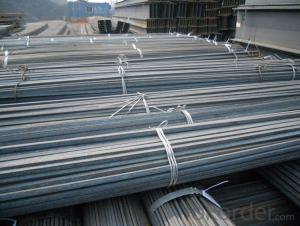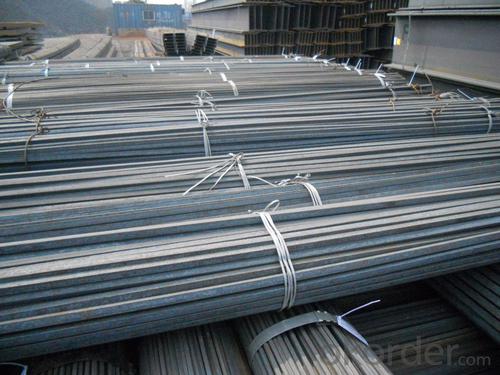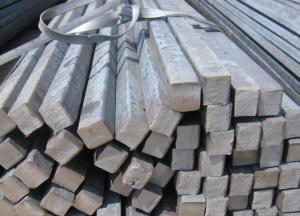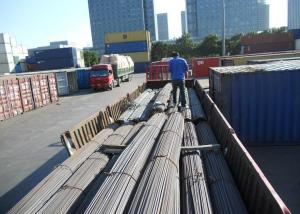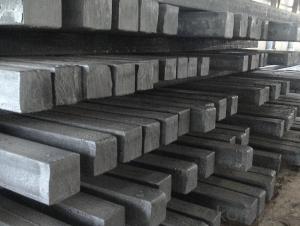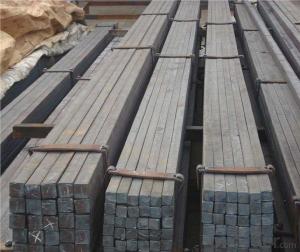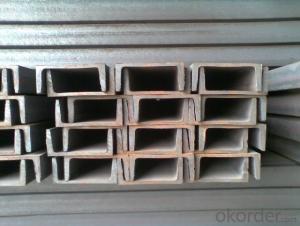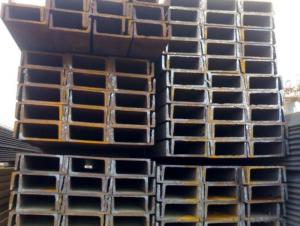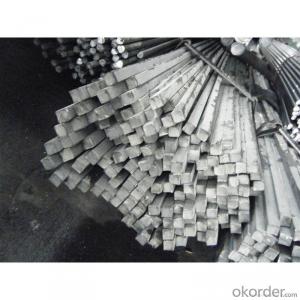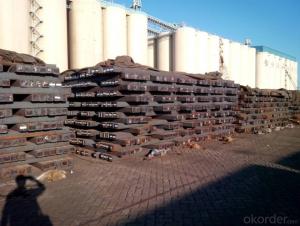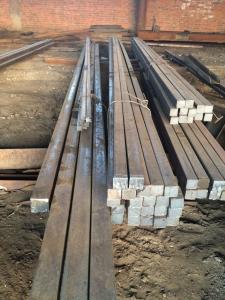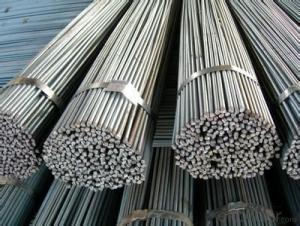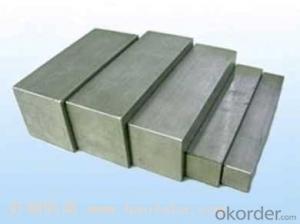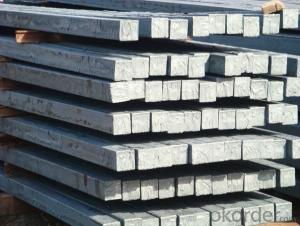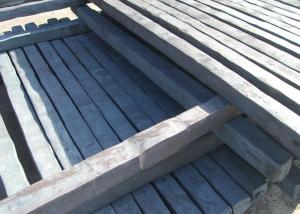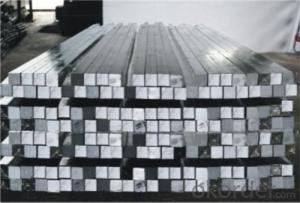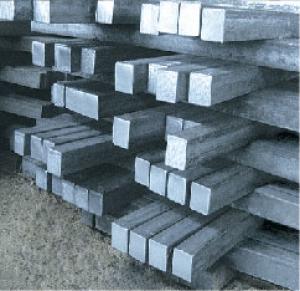Hot Rolled Square Steel Bar Material Q235
- Loading Port:
- Qingdao
- Payment Terms:
- TT or LC
- Min Order Qty:
- 25 m.t.
- Supply Capability:
- 3000 m.t./month
OKorder Service Pledge
OKorder Financial Service
You Might Also Like
Product Description:
OKorder is offering Hot Rolled Square Steel Bar at great prices with worldwide shipping. Our supplier is a world-class manufacturer of steel, with our products utilized the world over. OKorder annually supplies products to European, North American and Asian markets. We provide quotations within 24 hours of receiving an inquiry and guarantee competitive prices.
Product Applications:
The Square Steel is normally used as structure steel.
Row material for other structure steel like steel angles, channels, I-beams, H-beams, etc…
Product Advantages:
OKorder's Hot Rolled Square Steel Bar Material Q235 are durable, strong, and resist corrosion.
Main Product Features:
· Premium quality
· Prompt delivery & seaworthy packing (30 days after receiving deposit)
· Corrosion resistance
· Can be recycled and reused
· Mill test certification
· Professional Service
· Competitive pricing
Product Specifications:
Length of a side(mm) | Theoretical weight(kg/m) | Length of a side(mm) | Theoretical weight(kg/m) |
6 | 0.283 | 32 | 8.04 |
7 | 0.385 | 33 | 8.55 |
8 | 0.502 | 34 | 9.07 |
9 | 0.636 | 35 | 9.62 |
10 | 0.785 | 36 | 10.17 |
11 | 0.950 | 38 | 11.24 |
12 | 1.13 | 40 | 12.56 |
13 | 1.33 | 42 | 13.85 |
14 | 1.54 | 45 | 15.90 |
15 | 1.77 | 48 | 18.09 |
16 | 2.01 | 50 | 19.63 |
17 | 2.27 | 53 | 22.05 |
18 | 2.54 | 55 | 23.6 |
19 | 2.82 | 56 | 24.61 |
20 | 3.14 | 58 | 26.4 |
21 | 3.46 | 60 | 28.26 |
22 | 3.80 | 63 | 31.16 |
23 | 4.15 | 65 | 33.17 |
24 | 4.52 | 68 | 36.3 |
25 | 4.91 | 70 | 38.49 |
26 | 5.30 | 75 | 44.16 |
27 | 5.72 | 80 | 50.24 |
28 | 6.15 | 85 | 56.72 |
29 | 6.60 | 90 | 63.59 |
30 | 7.06 | 95 | 70.85 |
31 | 7.54 | 100 | 78.50 |
Notes:
1, The theoretical weights in the list, base on the density of 7.85 g/cm3.
2, The numbers with mean that they are not regulars or we don’t offer them.
-List 2. The allowed tolerance of Square Steel:
Length of a side(mm) | Allowed Tolerance | ||
Group1 | Group2 | Group3 | |
5.5~7 | ±0.20 | ±0.30 | ±0.40 |
7~20 | ±0.25 | ±0.35 | ±0.40 |
20~30 | ±0.30 | ±0.40 | ±0.50 |
30~50 | ±0.40 | ±0.50 | ±0.60 |
60~80 | ±0.60 | ±0.70 | ±0.80 |
80~110 | ±0.90 | ±1.0 | ±1.1 |
110~150 | ±1.2 | ±1.3 | ±1.1 |
150~190 | ―― | ―― | ±2.0 |
190~250 | ―― | ―― | ±2.5 |

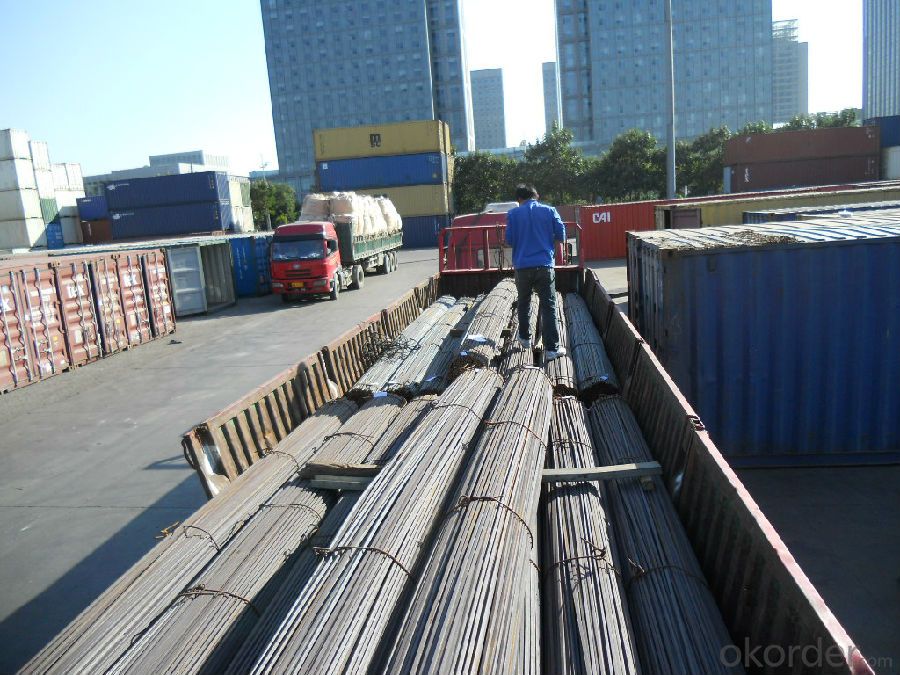
Payment:
-Invoicing on theoretical weight or actual weight as customer’s request.
-Regular terms of payment:
1, 30% payment in advance, the remaining balance (70% payment) against the copy of B/L.
2, 30% payment in advance, the remaining balance (70% L/C) against the copy of B/L.
3, Negotiable.
FAQ:
Q1: Why buy Materials & Equipment from OKorder.com?
A1: All products offered byOKorder.com are carefully selected from China's most reliable manufacturing enterprises. Through its ISO certifications, OKorder.com adheres to the highest standards and a commitment to supply chain safety and customer satisfaction.
Q2: How do we guarantee the quality of our products?
A2: We have established an advanced quality management system which conducts strict quality tests at every step, from raw materials to the final product. At the same time, we provide extensive follow-up service assurances as required.
Q3: How soon can we receive the product after purchase?
A3: Within three days of placing an order, we will begin production. The specific shipping date is dependent upon international and government factors, but is typically 7 to 10 workdays.
- Q: How do you use a steel square to determine the height of a step?
- To use a steel square to determine the height of a step, you can follow these steps: 1. Place the steel square on the step, with one of its sides resting against the vertical riser of the step. 2. Adjust the square so that it is perfectly level and perpendicular to the ground. 3. Look at the markings on the square's blade. These markings represent different measurements. 4. Align the edge of the square's blade with the top surface of the step. 5. Read the measurement on the blade where it intersects with the vertical riser of the step. 6. This measurement represents the height of the step. By using a steel square in this manner, you can accurately determine the height of a step. It helps to ensure that all steps in a flight of stairs are of the same height, which is crucial for safety and comfort.
- Q: How do you use a steel square to determine the angle of a hip rafter cut?
- To use a steel square to determine the angle of a hip rafter cut, you will need to follow these steps: 1. Start by placing the steel square on the edge of the hip rafter at the desired location for the cut. 2. Align one arm of the square with the edge of the rafter and make sure it is horizontal. 3. Locate the 12-inch mark on the blade of the square and align it with the top edge of the rafter. 4. Take note of the number on the blade that aligns with the bottom edge of the rafter. This number represents the pitch of the roof. 5. Next, locate the number on the tongue of the square that corresponds to the pitch of the roof. 6. Use a pencil or a marking tool to draw a line along the tongue of the square. 7. This line represents the angle at which you need to make the cut on the hip rafter. 8. Finally, use a saw or any appropriate cutting tool to carefully cut along the marked line. By using a steel square in this manner, you can accurately determine the angle of the hip rafter cut and ensure a precise fit for your roofing project. It is important to note that the specific measurements and markings on the square may vary depending on the type and brand of the square, so it is recommended to consult the instructions or user manual provided with your particular steel square for more accurate guidelines.
- Q: How do you use a steel square for creating precise corner spline joints?
- To use a steel square for creating precise corner spline joints, you would first measure and mark the desired location for the joint on the wood. Next, place the steel square on the marked corner and align it with the adjacent edges of the wood. Use a pencil or a knife to trace along the edge of the square, creating a precise guideline for the joint. Repeat this process on the other piece of wood that will be joined. This guideline will help you accurately cut and align the splines, ensuring a precise and snug fit for the joint.
- Q: Can a steel square be used for measuring circular objects?
- No, a steel square cannot be used for measuring circular objects. A steel square, also known as a carpenter's square or a framing square, is a tool designed for measuring and marking right angles. It consists of a long straight edge and a shorter perpendicular edge, forming an L-shape. While it can be used for various purposes in carpentry and woodworking, it is not suitable for measuring curves or circular objects. For measuring circular objects, a tool such as a compass, a tape measure, or a set of calipers would be more appropriate.
- Q: What are the different features to consider when buying a steel square?
- When buying a steel square, there are several important features to consider. Firstly, the size of the square is crucial. Steel squares come in various sizes, typically ranging from 6 inches to 24 inches. The size you choose will depend on the scale of your projects and the level of precision you require. Secondly, the material and build quality of the square are important considerations. Look for a steel square made from high-quality, durable steel that can withstand heavy use and resist corrosion. Additionally, check for accuracy in the square's construction, ensuring that the edges are straight and the angles are precise. The markings and measurements on the square are also vital features to consider. Look for clear, easy-to-read markings that are permanently etched or stamped onto the square. These markings should include accurate measurements, such as inches, centimeters, and degrees, allowing for precise measurements and layout work. Another feature to consider is the type of square. There are different types available, including combination squares, framing squares, and try squares, each serving different purposes. Consider the specific tasks you will be using the square for and choose the type that best suits your needs. Additionally, the square's weight and handle design should be taken into account. A heavier square may provide more stability, while a lighter one may be more comfortable to use for extended periods. The handle should be ergonomic and easy to grip, ensuring comfort and control during use. Lastly, consider the brand and price of the steel square. It is generally recommended to choose a reputable brand that has a track record of producing high-quality tools. While price is not always an accurate indicator of quality, it is important to find a balance between affordability and durability, ensuring that you are getting the best value for your money. In conclusion, when buying a steel square, consider the size, material quality, markings, type, weight, handle design, brand, and price. By carefully considering these features, you can find a steel square that meets your specific needs and provides accurate and reliable measurements for your projects.
- Q: Can a steel square be used for checking the squareness of a concrete form?
- Indeed, the squareness of a concrete form can be checked by employing a steel square. In construction, steel squares are frequently employed to gauge and confirm right angles. It is crucial to guarantee that the steel square is appropriately aligned with the concrete form's edges when utilizing it. By positioning the steel square alongside the form's edges, one can verify the perfect squareness of the corners and make adjustments if needed. This practice aids in guaranteeing the precise shape of the concrete form prior to pouring the concrete, ultimately leading to a superior final product.
- Q: Can a steel square be used for checking the squareness of table legs?
- Yes, a steel square can be used for checking the squareness of table legs. A steel square is a versatile tool that is commonly used in carpentry and woodworking. It has a 90-degree angle design that allows you to easily check if the table legs are perpendicular to the tabletop. By placing the steel square against the table leg and ensuring that it aligns perfectly with both the vertical and horizontal sides, you can determine if the leg is square. This is important for ensuring the stability and proper functioning of the table.
- Q: What are some common uses of a steel square in blacksmithing?
- In blacksmithing, a steel square, also called a layout square or framing square, is a highly adaptable tool. It serves multiple purposes in this craft: 1. Assurance of right angles: The primary function of a steel square is to guarantee the perfect squareness of corners and angles. It is frequently employed to assess the squareness of workpieces, including forging projects and structural components. This guarantees accuracy and precision in the final product. 2. Design and marking: Blacksmiths regularly employ a steel square to mark and create patterns on their workpieces. The square's straight edges and right angles aid in producing consistent and symmetrical shapes. It can be used to draw parallel lines, perpendicular lines, or measure and mark specific lengths. 3. Centering and alignment: Correct alignment and centering of workpieces are crucial in blacksmithing. A steel square facilitates this process by providing a reference point. It ensures that a piece is centered on an anvil or other tools, resulting in a balanced and evenly distributed force during forging. 4. Flatness testing: A steel square is an exceptional tool for examining the flatness of a surface. By placing the square's edge against a workpiece, a blacksmith can identify any gaps or irregularities. This is particularly useful in ensuring the flatness and uniform shape of forging projects, especially when working on blades, tools, or other items that demand precise flatness. 5. Tool and equipment setup: Blacksmiths frequently rely on a steel square to align and set up their tools and equipment. It aids in positioning various components, such as anvils, hammers, tongs, or vices, at right angles to one another. This guarantees stability and consistency throughout the blacksmithing process. All in all, a steel square is an indispensable tool for blacksmiths. Its capacity to measure, mark, align, and ensure right angles makes it a versatile and essential tool in various stages of the blacksmithing process.
- Q: How do you use a steel square to determine the slope of a gutter?
- In order to determine the slope of a gutter using a steel square, the following steps should be followed: 1. Begin by measuring the width of the gutter using the outer edges of the steel square. Make sure that the square is firmly pressed against the gutter. 2. Proceed by positioning one side of the steel square against the bottom of the gutter, ensuring that it is level. The other side of the square should extend vertically towards the top edge of the gutter. 3. Verify that the steel square is perfectly vertical by using a level. If necessary, make adjustments. 4. Once the steel square is aligned correctly, examine the measurement markings on the square. The vertical side of the square indicates the rise or fall, while the horizontal side represents the run or distance. 5. Take note of the measurement where the horizontal side of the square intersects with the top edge of the gutter. This measurement will provide you with the rise or fall of the gutter. 6. To calculate the slope, divide the measurement of the rise or fall by the width of the gutter. This will yield the slope ratio, which can be expressed as a percentage or a ratio (e.g., 1:100). Utilizing a steel square to determine the slope of a gutter is an effective technique as it enables precise measurements and guarantees the proper installation of the gutter for efficient drainage.
- Q: Can a steel square be used for checking the alignment of a door frame?
- Yes, a steel square can be used for checking the alignment of a door frame. It can be used to ensure that the corners of the door frame are square and that the sides are perpendicular.
Send your message to us
Hot Rolled Square Steel Bar Material Q235
- Loading Port:
- Qingdao
- Payment Terms:
- TT or LC
- Min Order Qty:
- 25 m.t.
- Supply Capability:
- 3000 m.t./month
OKorder Service Pledge
OKorder Financial Service
Similar products
Hot products
Hot Searches
Related keywords
